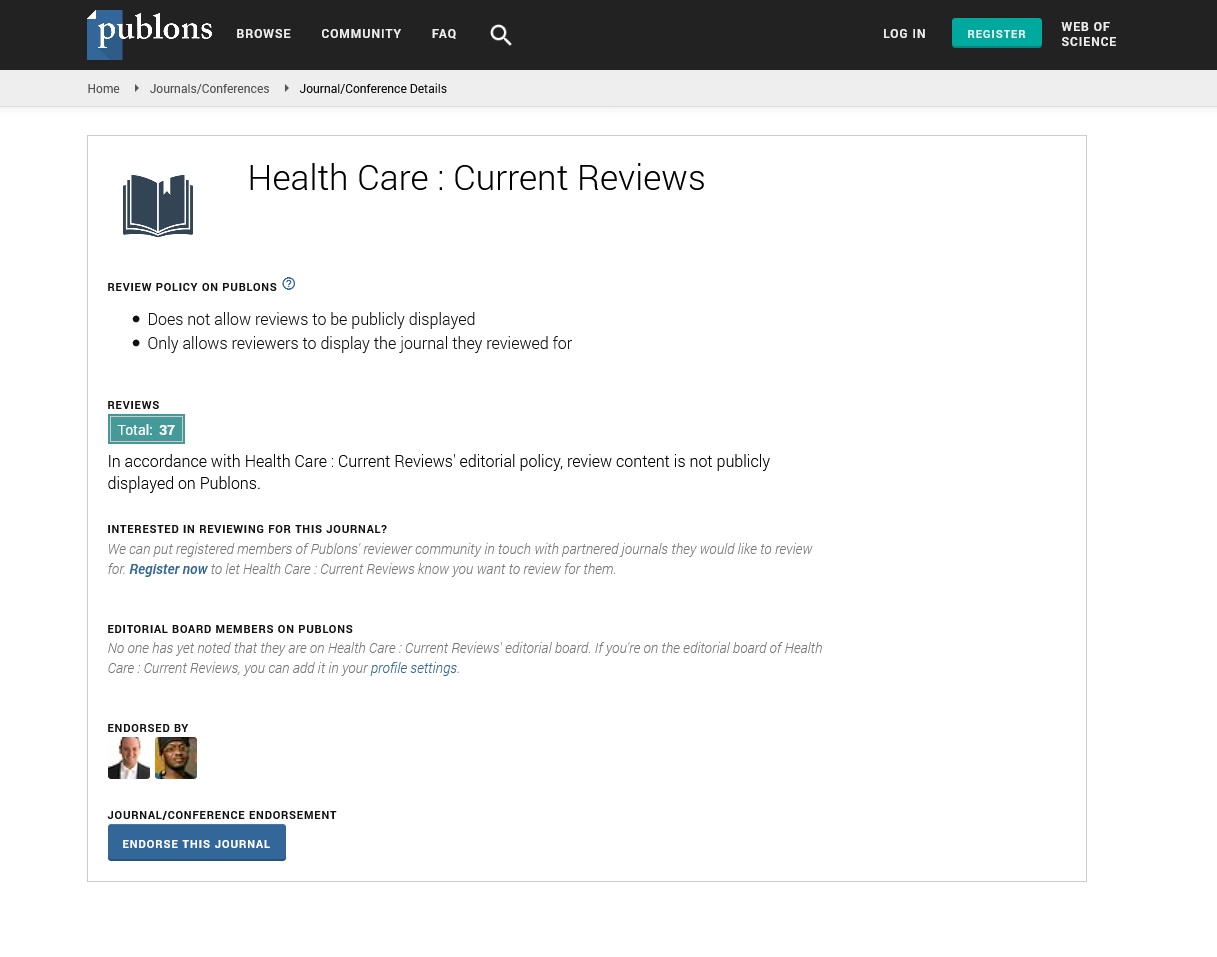Indexed In
- Open J Gate
- Academic Keys
- RefSeek
- Hamdard University
- EBSCO A-Z
- Publons
- Geneva Foundation for Medical Education and Research
- Google Scholar
Useful Links
Share This Page
Journal Flyer

Open Access Journals
- Agri and Aquaculture
- Biochemistry
- Bioinformatics & Systems Biology
- Business & Management
- Chemistry
- Clinical Sciences
- Engineering
- Food & Nutrition
- General Science
- Genetics & Molecular Biology
- Immunology & Microbiology
- Medical Sciences
- Neuroscience & Psychology
- Nursing & Health Care
- Pharmaceutical Sciences
Perspective - (2025) Volume 13, Issue 1
The Growing Role of Virtual Health Clinics in Global Healthcare
Anna Weber*Received: 26-Feb-2025, Manuscript No. HCCR-25-28731; Editor assigned: 28-Feb-2025, Pre QC No. HCCR-25-28731 (PQ); Reviewed: 14-Mar-2025, QC No. HCCR-25-28731; Revised: 21-Mar-2025, Manuscript No. HCCR-25-28731 (R); Published: 28-Mar-2025, DOI: 10.35248/2375-4273.25.13.423
Description
Virtual health clinics are becoming a larger part of how medical care is delivered around the world. What started as a temporary solution during times of restricted movement has now developed into a lasting feature of healthcare systems. These clinics use technology to connect patients and healthcare providers, often through video calls, phone conversations, or online platforms. As the demand for accessible and efficient care increases, virtual clinics are stepping in to meet many of those needs.
One of the main advantages of these clinics is convenience. Patients no longer need to travel long distances, take time off work, or sit in crowded waiting rooms to receive medical advice. Instead, they can access services from the comfort of their homes. This is especially helpful for those with limited mobility, people in rural or isolated areas and individuals with busy schedules. Appointments can often be arranged quickly and follow-ups are easier to manage.
Virtual care also makes it possible to reach people who might otherwise avoid going to a clinic. Some individuals may feel anxious about visiting hospitals or speaking in person with medical staff. An online setting can make them feel more relaxed and open. This can lead to better communication and more accurate information being shared, which helps with proper diagnosis and treatment.
For healthcare systems, these clinics offer a way to manage patient flow more effectively. Minor health concerns, prescription renewals and follow-up visits can all be handled remotely. This leaves in-person appointments available for those who need physical exams, lab tests, or procedures. By organizing care in this way, medical facilities can reduce crowding and improve response times.
The use of virtual platforms also opens up new opportunities for collaboration. A patient in one country can consult with a specialist in another, or a general practitioner can seek advice from a more experienced colleague during a call. This wider network of care providers supports better decision-making and gives patients access to a larger pool of knowledge. However, the growth of virtual health clinics also brings certain challenges.
Not all patients have access to reliable internet or suitable devices. In many areas, digital literacy is limited, meaning people may struggle to use these tools correctly. Older adults, in particular, may find it difficult to navigate online systems or feel uncomfortable using video calls. To make these clinics effective for everyone, support must be provided to help users become more confident with the required technology.
Language and cultural differences can also affect communication during virtual appointments. In a face-to-face setting, non-verbal cues like body language help doctors understand how a patient is feeling. These cues are often missing or harder to read online. It is important for healthcare providers to adapt their communication style to make sure patients still feel heard and understood.
Privacy is another concern. Patients must feel secure when sharing sensitive health information online. Healthcare systems and technology companies need to work together to ensure data protection, strong passwords and secure platforms. Clear policies should also explain how information is stored and who can access it.
Despite these concerns, the benefits of virtual clinics continue to gain attention. In developing countries, where medical services may be limited, these platforms can help connect people with doctors they would not otherwise be able to reach. Health organizations and charities have started using virtual tools to extend their services to remote villages and underserved populations. By offering basic care, education and guidance through digital platforms, they are helping to improve health outcomes in regions with few resources.
Training healthcare workers in how to use these tools effectively is another area of focus. Medical schools and continuing education programs are now including lessons on virtual care delivery. Learning how to build trust, manage online records and respond to patient concerns in a digital space is becoming part of the standard skill set for healthcare professionals.
As the world becomes more connected, the role of virtual health clinics is likely to expand. These platforms provide a flexible, affordable and efficient way to deliver care. While they will never completely replace in-person visits, they offer a valuable addition to traditional methods. By improving access, reducing delays and supporting communication between patients and providers, virtual clinics are helping reshape healthcare in ways that meet the needs of modern life. With thoughtful planning and continued investment, they can serve as a useful tool for expanding care to more people, across borders and communities.
Citation: Weber A (2025). The Growing Role of Virtual Health Clinics in Global Healthcare. Health Care Curr Rev. 13:423.
Copyright: © 2025 Weber A. This is an open access article distributed under the terms of the Creative Commons Attribution License, which permits unrestricted use, distribution and reproduction in any medium, provided the original author and source are credited.

